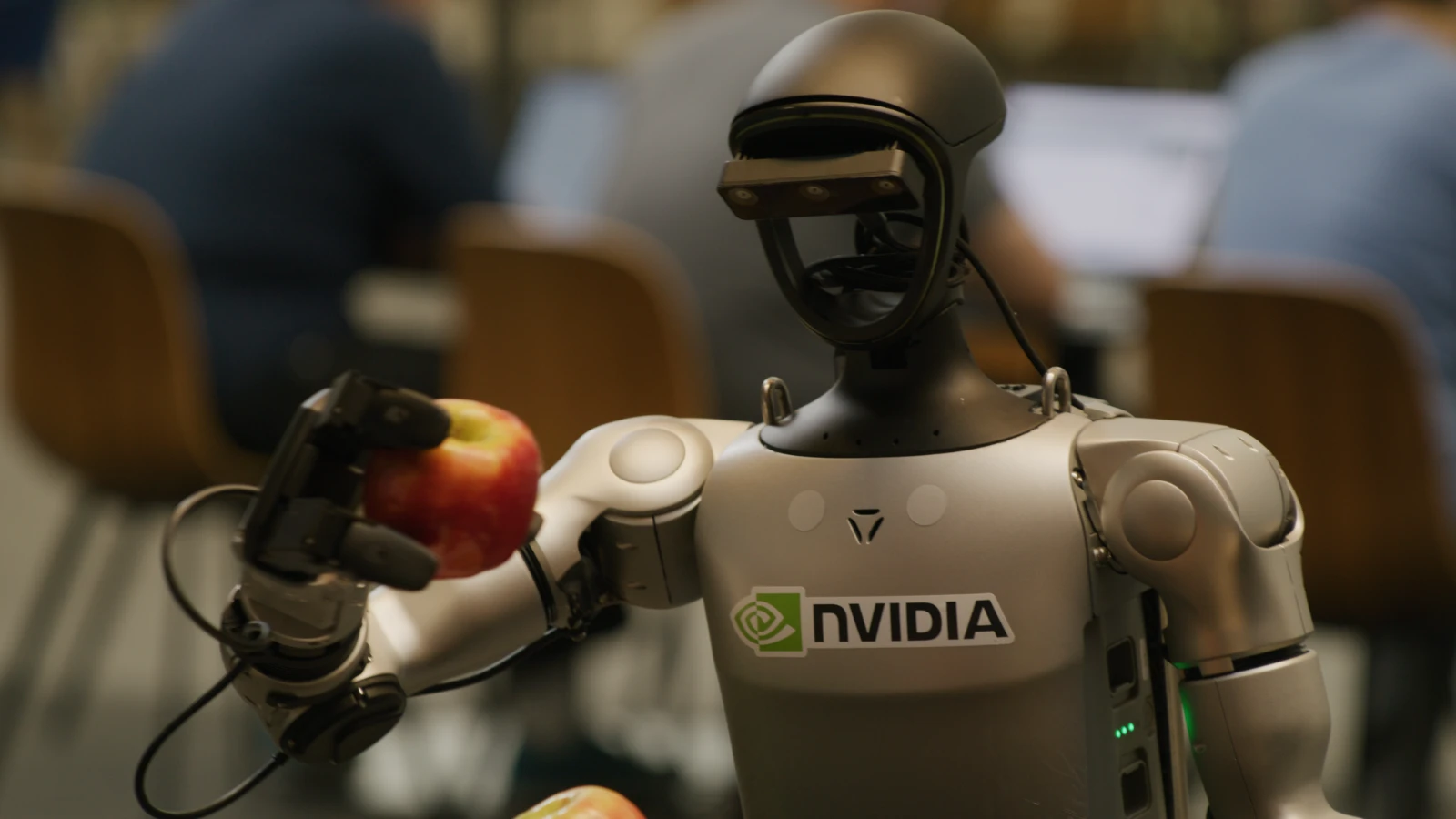NVIDIA Accelerates Robotics Research and Development With New Open Models and Simulation Libraries

NVIDIA has announced that the open-source Newton Physics Engine is now available in NVIDIA Isaac™ Lab, alongside the new open Isaac GR00T N1.6 reasoning vision-language-action model and advanced AI infrastructure. Together, these technologies offer developers and researchers an open, accelerated robotics platform designed to speed iteration, standardize testing, unify training with on-robot inference, and improve the safe transfer of robot skills from simulation to reality.
“Humanoids are the next frontier of physical AI, requiring the ability to reason, adapt, and act safely in unpredictable environments,” said Rev Lebaredian, NVIDIA’s vice president of Omniverse and simulation technology. “With these updates, developers now have three essential systems to bring robots from research into real life — Isaac GR00T as the brain, Newton as the body, and Omniverse as the training ground.”
Newton Physics Engine: Raising Standards in Simulation
NVIDIA’s Newton, a GPU-accelerated, open-source physics engine, is being released in beta under the Linux Foundation. Developed with Google DeepMind, Disney Research, and NVIDIA, Newton is built on the Warp and OpenUSD frameworks. Its flexible design allows for highly realistic simulation of complex humanoid actions such as walking on uneven terrain or handling delicate objects.
Early adopters include ETH Zurich Robotic Systems Lab, Technical University of Munich, Peking University, Lightwheel, and Style3D.
Isaac GR00T N1.6: Smarter Robot Reasoning
The new Isaac GR00T N1.6 model integrates NVIDIA Cosmos™ Reason, a customizable reasoning vision-language model for physical AI. Acting as a robot’s “deep-thinking brain,” Cosmos Reason translates vague instructions into step-by-step actions using prior knowledge, physics, and common sense.
Already downloaded over 1 million times, Cosmos Reason tops Hugging Face’s Physical Reasoning Leaderboard and is now available as an NVIDIA NIM™ microservice. Developers can also post-train Isaac GR00T N models with the NVIDIA Physical AI Dataset, downloaded over 4.8 million times.
Robot makers including AeiROBOT, Franka Robotics, LG Electronics, Lightwheel, Mentee Robotics, Neura Robotics, Solomon, Techman Robot, and UCR are currently evaluating GR00T N models.
Expanding Cosmos World Foundation Models
NVIDIA also announced updates to its Cosmos WFMs (downloaded over 3 million times), enabling developers to generate diverse training data for physical AI using text, image, and video prompts.
- Cosmos Predict 2.5 (coming soon) merges three models into one, supports up to 30-second video generation, and offers multi-view outputs.
- Cosmos Transfer 2.5 provides faster, higher-quality results while being 3.5x smaller, generating photorealistic data from 3D simulations.
Training Robots to Grasp Objects
The Isaac Lab 2.3 developer preview introduces a new grasping workflow using the NVIDIA Omniverse™ platform. This automated training curriculum gradually increases task difficulty, helping robots learn complex manipulation in unpredictable environments.
Boston Dynamics’ Atlas robots used this system to significantly enhance their grasping skills. Other adopters include Agility Robotics, Figure AI, Hexagon, Skild AI, Solomon, and Techman Robot.
Scalable Skill Evaluation in Simulation
To simplify large-scale testing of robot skills in realistic scenarios, NVIDIA and Lightwheel are co-developing Isaac Lab - Arena, an open-source policy evaluation framework for standardized and scalable simulation-based experimentation.
AI Infrastructure for Robotics
To power these advances, NVIDIA introduced new infrastructure:
- NVIDIA GB200 NVL72 — a rack-scale system with 36 Grace CPUs and 72 Blackwell GPUs, adopted by cloud providers for AI training.
- NVIDIA RTX PRO™ Servers — offering a unified architecture for training, data generation, learning, and simulation.
- NVIDIA Jetson Thor™ — powered by Blackwell GPU, enabling real-time multi-AI workflows and inference on humanoid robots.
Driving Robotics Research
NVIDIA’s technologies were referenced in nearly half of papers at CoRL 2025, with adoption across Carnegie Mellon, University of Washington, ETH Zurich, and National University of Singapore. Featured projects include BEHAVIOR, a benchmark by Stanford’s Vision and Learning Lab, and Taccel, a tactile robotics simulation platform from Peking University.
The announcements were made at CoRL 2025 in Seoul, running September 27 – October 2.